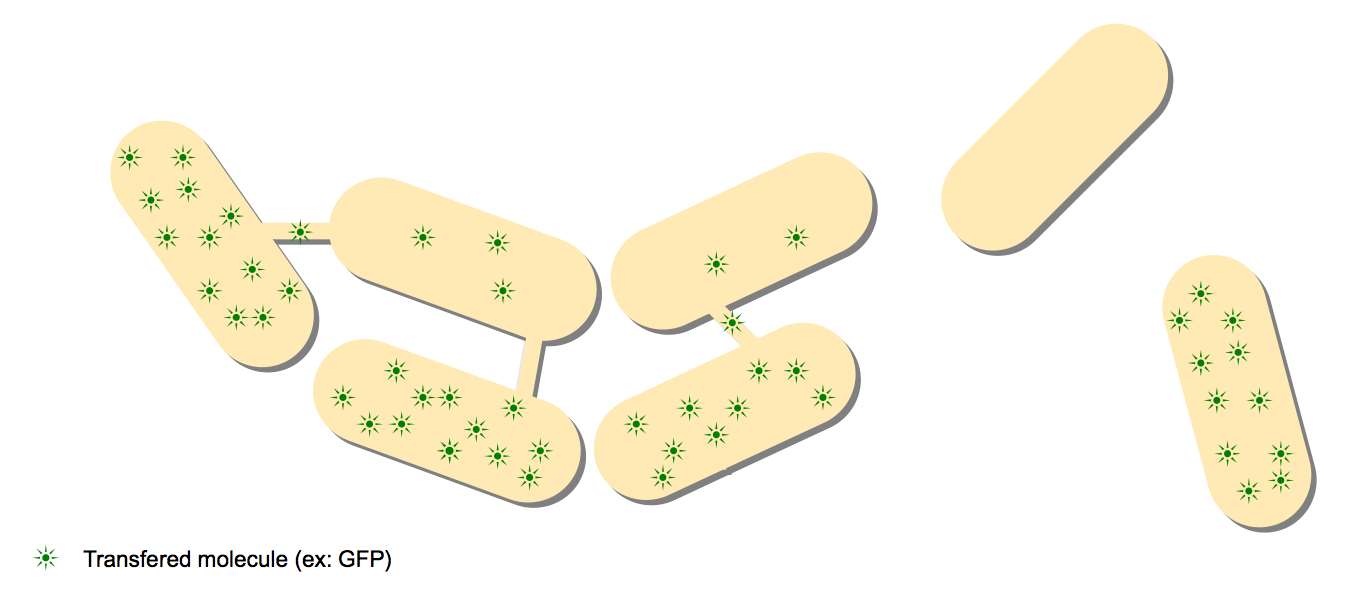Team:Paris Bettencourt/Project/Project details
From 2011.igem.org
Contents |
Project Details
Direct observation
Proof of principle: the first step is about reproducing what the authors of the original paper already did, to make sure that we can obtain the same results.
Antibiotics
It has been shown that the nanotubes allow for a transient antibiotic resistance. In order to prove this part, we use two different strains of subtilis. Each strain has a different antibiotic resistance encoded and when grown together on a double selective medium colonies still form. The limitations of this simple method is that we don't know if both strains survive or only one does. Different hypothesis follow from there: either both survive because both antibiotics are exchanged or one strain only survives because one antibiotic preferentially get through the nanotubes.
Simple GFP
Once again, we will re-create an experiment undertaken by the original authors. It consists in mixing two different strains of subtilis: one is gfp+ and one is gfp-. Using an overlay of phase contrast microscopy and fluorescent microscopy we shoud be able to see which strain is which and also observe the formation of a GFP gradient. This will be a stronger statement towards the existence of the nanotubes.
GFP-LacO construct
The aim is to focalise diffused fluorescence on few spots to be visible.
We use two differents subtilis strains :
- One with recombinant fusion protein GFP:LacI (plasmid pSG20) and YFP:tetR (plasmid pFX234)
- One with mini-F plasmids containing lacO / tetR array.
GFP:LacI and YFP:tetR diffuse and bind on lacO / tetR array.
Characterization of the nanotubes
Master-slave system
Master and slave relationships aka irreversible systems: at this point we will have re-proven the existence of the nanotubes and will know how to correctly manipulate B. subtilis, it is now time to use the BioBricks that were sent to us. In this step, we shall using two different kinds of strains. As mentionned in the title of the step, there will be a master which is actually the signal emitter cell and there will be a slave which will be the receiver cell.
Bi-directional system
WIP
 "
"
